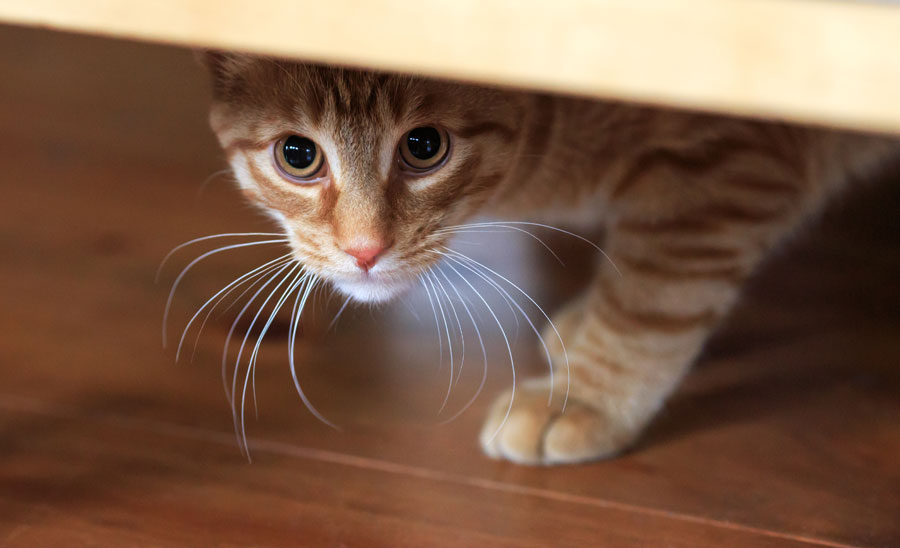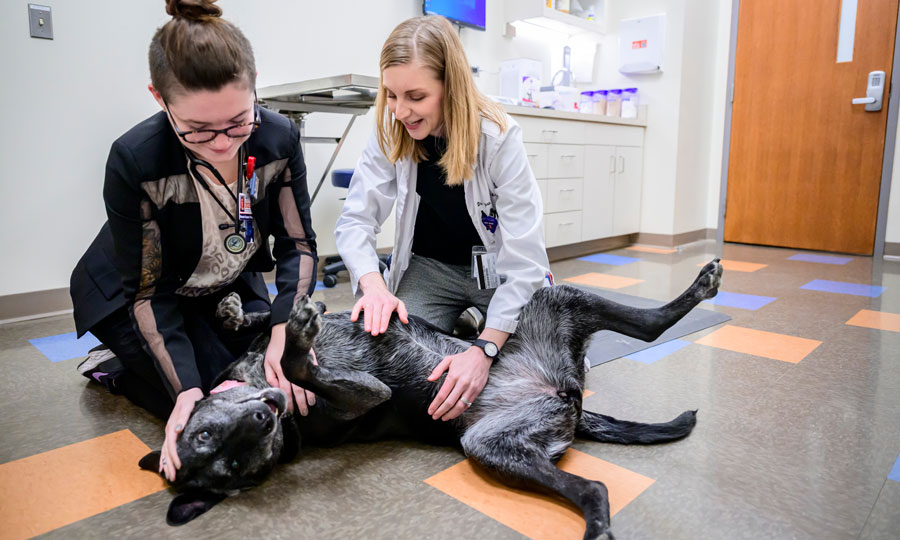Find Out All That Cats Need
Cats have a reputation for being low-maintenance, independent creatures, especially in comparison with dogs. But the truth is that providing a healthy, happy life for your cat involves a lot more than just a daily meal and clean litterbox.
August 22 is National Bring Your Cat to the Vet Day, an event created to educate cat owners about the importance of regular veterinary care.
Annual Exams
“Annual examinations are essential to feline health,” explains Debbie Stratton, a student at the University of Illinois College of Veterinary Medicine and president of the college’s student chapter of the American Association of Feline Practitioners.
“The annual physical exam provides screening for diseases that may otherwise go unnoticed. When disease is detected in its early stages, it is easier to treat or slow its progression.”
According to Stratton, the annual veterinary examination can gather health information without unduly stressing the patient.
“Simply weighing the cat tells the veterinarian quite a bit about the cat’s health status,” she says. “For most cats, it is possible to do a hands-off exam to evaluate grooming and other outward signs of health. The veterinarian will look for signs of pain, which can be seen in a cat’s posture, including the ear position, eye position, and back posture.”
The annual veterinary appointment also provides a chance for veterinarians and owners to discuss overall well-being and strategies to improve the home environment, husbandry, and mental health of the cat.
Healthy Environment
Dr. Kelly Ballantyne is a board-certified veterinary behaviorist who practices at Veterinary Behavior at Illinois, part of the college’s clinical facility located in Chicago’s Illinois Medical District. She advises owners on ways to ensure that a cat’s home environment promotes well-being.
“The first step is to make sure your cat’s basic needs are being met. The American Association of Feline Practitioners and International Society of Feline Medicine have identified five pillars of a healthy feline environment,” says Dr. Ballantyne.
Owners should:
- Provide your cat with a safe space
- Provide your cat with multiple and separated key resources
- Provide your cat with the opportunity for play and predatory behavior
- Provide your cat with positive, consistent, and predictable social interactions
- Provide your cat with an environment that respects the importance of his sense of smell
Once your cat’s basic needs have been met, Dr. Ballantyne encourages you to think about enrichment for your cat; in other words, provide ways to add variety and interest to your cat’s daily existence.
Ongoing Enrichment
Enrichment is a good idea for pets of any species, and enrichment activities should complement the animal’s natural behavior. Dr. Ballantyne says, “Each species has its own needs for an optimal environment. A cat’s needs will be different from a dog’s needs, a horse’s, a bird’s, a rabbit’s, or any other pet you may have.”
When considering ways to offer enrichment for your cat, you should keep in mind the five pillars mentioned above. Dr. Ballantyne offers a couple of her favorite cat enrichment activities.
“I really like using food to mimic predatory behavior. Transitioning cats from eating out of a bowl to eating from interactive food toys is a great way to provide physical as well as mental exercise and more closely mimics the way cats naturally eat,” she says.
Her other suggestion may surprise you: you can enrich your cat’s life and strengthen your bond with your cat through training.
“Positive reinforcement training can be a good enrichment strategy that can help cat owners build a strong, consistent relationship with their cat,” she says. “Cats can be trained to do a variety of behaviors, just as other animals can, and it’s fun!”
Outdoor Precautions
Although some cat owners allow their cats outside for enrichment and entertainment, Dr. Ballantyne recommends alternatives to free-roaming outdoor time because of the associated health risks.
“The outdoors is the cat’s natural environment, so having a safe outdoor space for cats to explore is a way to provide enrichment. To give your cat access to the outdoors without increasing her risk of acquiring an infectious disease, being attacked, or harming local wildlife, you can provide a screened enclosure or walk your cat on a leash,” she suggests.
If you have questions about feline health or enrichment, contact your local veterinarian. And be sure to make an appointment for your cat’s annual checkup as part of “National Bring Your Cat to the Vet Day.”
By Hannah Beers
Photo by L. Brian Stauffer

![[Zucca goes to the vet]](https://vetmed.illinois.edu/wp-content/uploads/2021/04/pc-cat-2-vet.jpg)


